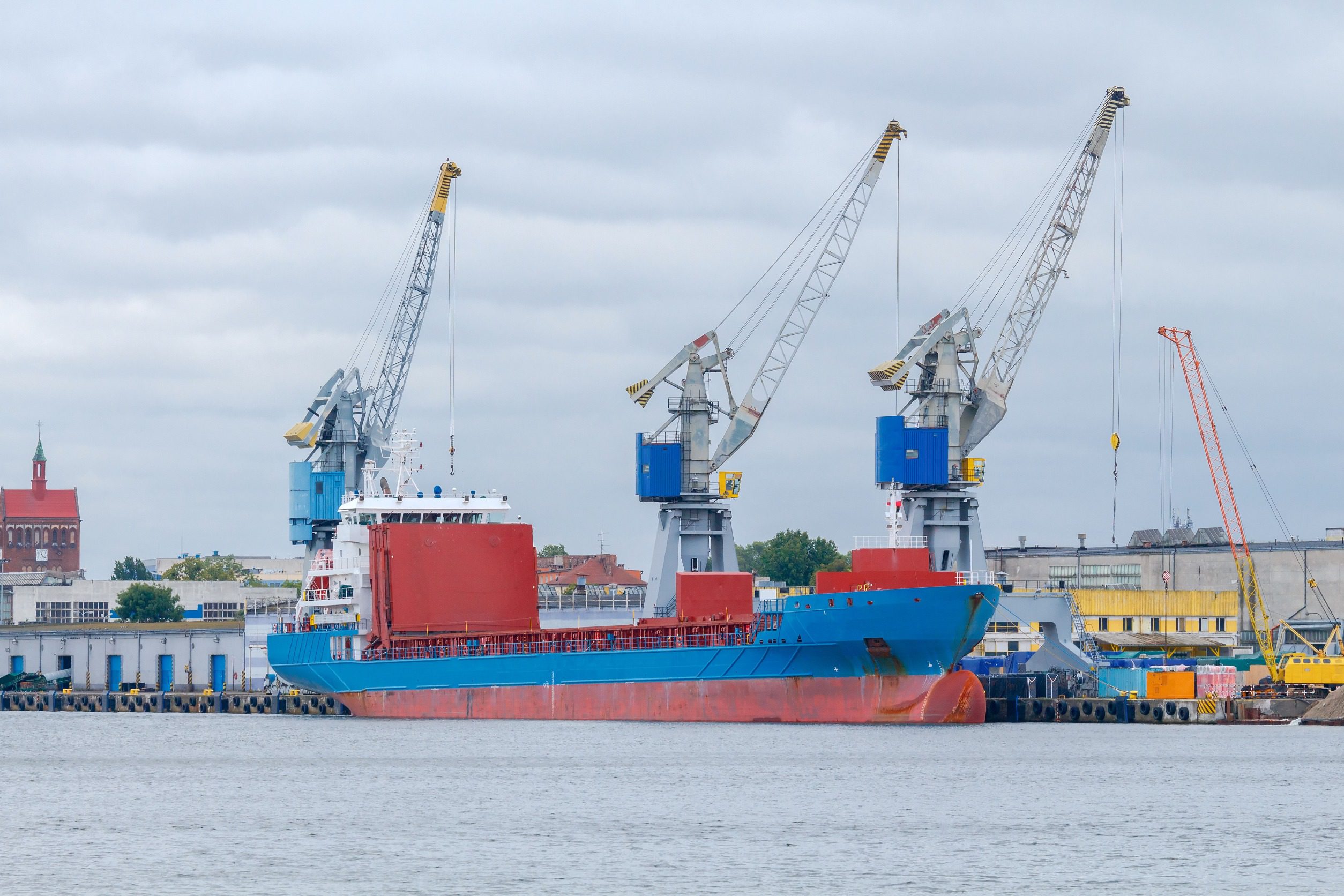The successes of Polish ports in the first half of 2024
26.08.2024
The first half of 2024 brought clear successes for Polish seaports, especially in the area of container handling and liquid fuels. The data shows that Polish ports are playing an increasingly important role in European logistics and international trade.

Increase in the handling of containers
The greatest success of Polish ports in the first half of 2024 was the increase in container handling. In total, Polish ports handled 1,557,603 TEU, which means an increase of 8.28 percent compared to the same period in the previous year.
The best results in this category were recorded by the Baltic Hub at the Port of Gdansk, which handled over 1 million TEU. This is the second record result in a row for the first half of the year, which proves the growing importance of this port in international trade. The ongoing construction of the T3 terminal promises further growth in the coming years.
The Port of Gdynia also recorded significant increases, especially in the OT Port Gdynia and GCT terminals, which increased their turnover by 26.2 percent and 18.5 percent, respectively. Investments in new routes, such as the Poland Express Service to the UK, have contributed to this success.
Successes in the transshipment of liquid fuels
The liquid fuels sector in Polish seaports also recorded excellent results in the first half of 2024. In total, Polish ports handled 25.476 million tonnes of liquid fuels, which means an increase of 4.99% compared to the same period of the previous year.
The Port of Gdansk, being the largest fuel port in the country, played an important role in this success. Liquid fuel transshipments in Gdańsk increased by 9.64 percent, reaching 20.12 million tonnes. Naftoport, as a key fuel terminal at the Port of Gdansk, continues its market dominance, proving that it is a strategic hub for the supply of crude oil and petroleum products to Poland and other countries in Central and Eastern Europe.
It is worth noting that the increase in the transshipment of liquid fuels in Polish ports is not only the result of the current economic situation, but also the result of long-term efforts to diversify energy sources. The introduction of sanctions on imports of crude oil and petroleum products from Russia, which came into force in December 2022 and February 2023, contributed to the need to look for new sources of supply. As a result, Polish sea terminals, including Naftoport, have become a key link in ensuring stable and secure energy supplies to Poland.
The growing importance of Polish ports in the liquid fuel sector is also visible in the context of planned investments. At the beginning of 2024, a contract was signed for the preparation of design documentation for the expansion of the Naftoport terminal with a new deep-water berth, the so-called “W” berth, which will increase the terminal’s capacity by approximately 9 million tonnes per year. This investment will not only increase the transshipment capacity, but also strengthen Poland’s position as a key energy hub in the region.
Stability in grain handling
In the first half of 2024, Polish ports recorded stability in grain and general cargo transshipments, which is an important element of their overall operational efficiency. Grain transshipments increased by 2.53 percent compared to the same period in 2023.
The Port of Gdynia, which has for years maintained its leading position among Polish grain ports, continues to play a key role in the handling of agro cargo. In the first half of 2024, the grain terminals in Gdynia handled 3.3 million tonnes. Moreover, the Port of Gdansk recorded significant growth in this category, with 10.33% higher result compared to the previous year. This increase is the result of both growing demand for grain exports and effective investment activities in port infrastructure.
Perspectives
Although certain cargo groups, such as coal and ores, have recorded declines, these are a natural consequence of global changes, including the energy transition, which Poland and the entire European Union are focusing on. The reduction in coal transshipments by 63.46 percent is the result of conscious decisions to move away from this raw material and switch to more sustainable energy sources.
The outlook for the second half of 2024 is promising, especially for the container and liquid fuels sectors. A further increase in transshipments and the strengthening of the position of Polish ports in international trade are expected.
Source:
- Polska Morska – Podsumowanie pierwszego półrocza 2024 roku w polskich portach,
- Actia Forum – Wyniki przeładunków w polskich portach morskich w pierwszej połowie 2024
- Everything
- News (1)
- Events (5)
- Get Support (1)
-
 Event
EventVI edition of the Smart Warehouse conference
The conference will be held as part of the MODERNLOG and ITM fairs – the leading events of the logis…
 Event
EventSYMAS MAINTENANCE 2024
International Trade Fair for Powder & Bulk Solids Technologies SYMAS is one of the most important in…
-
 Event
EventVI edition of the Smart Warehouse conference
The conference will be held as part of the MODERNLOG and ITM fairs – the leading events of the logis…
 Event
EventSYMAS MAINTENANCE 2024
International Trade Fair for Powder & Bulk Solids Technologies SYMAS is one of the most important in…
The Export Promotion Portal uses cookies to make it easier for users to use the website and for statistical purposes. If you do not block these files, you agree to their use and saving in the memory of your computer or other device. Remember that you can change your browser settings to block the storage of cookies. More information can be found in Privacy Policy and Terms and conditions.



